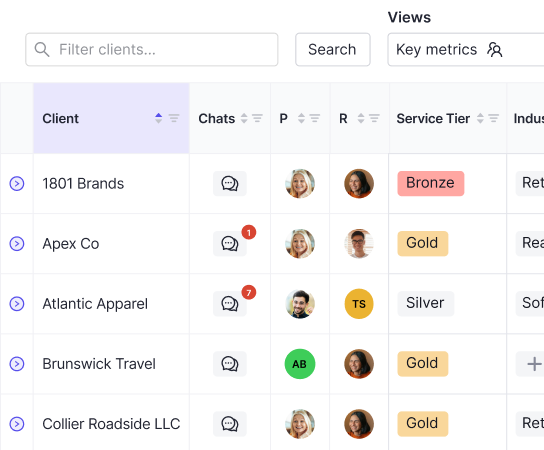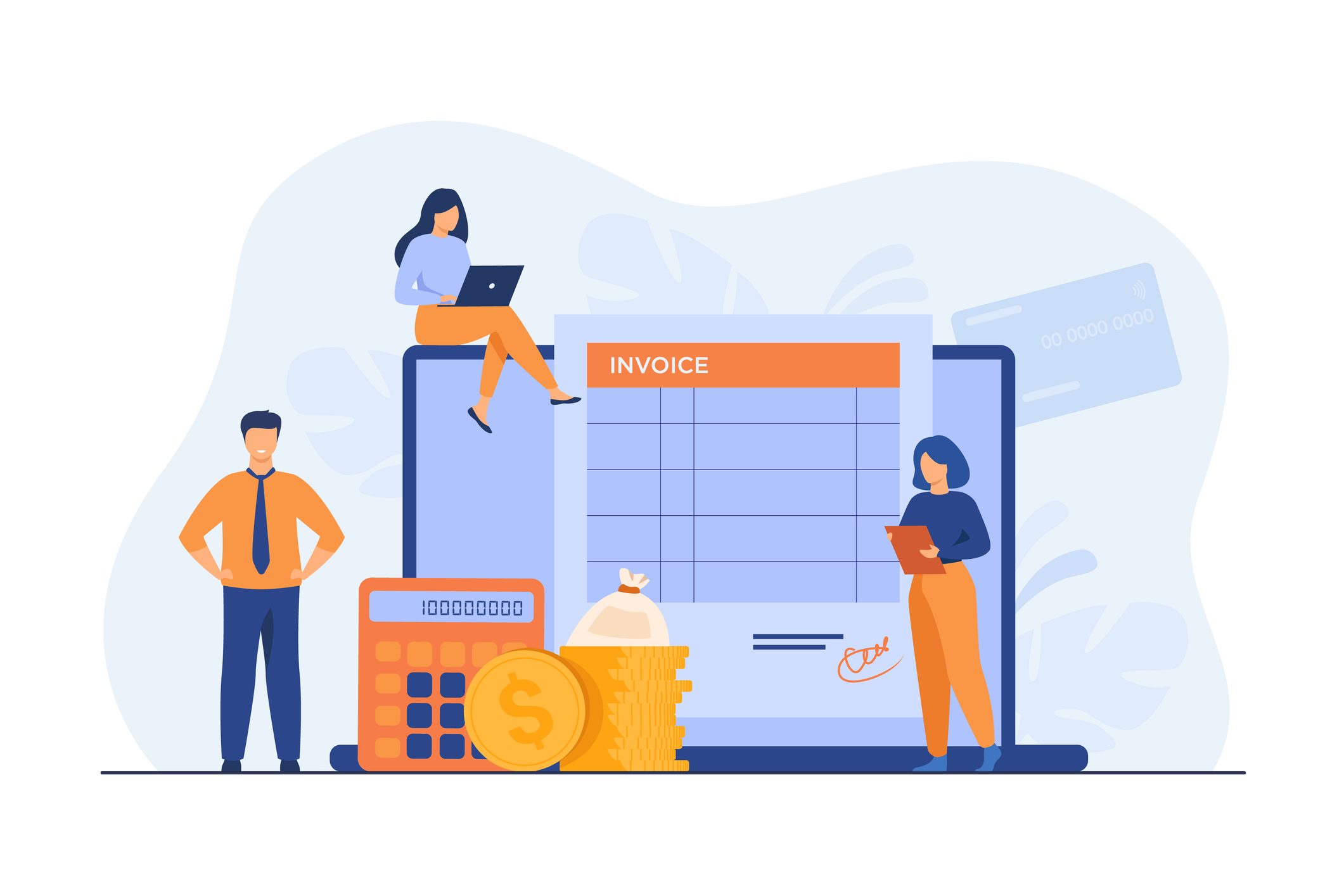Naturally, we favor ourselves, Keeper, as our recommendation for the best bookkeeping practice management software in 2025. We based our assessment on a variety of factors that include cost, integration capabilities, and the quality and diversity of the software’s features.
These are all features that we built out because we couldn’t already find them in the market.
That said, the other solutions on this list have their advantages and may be more suitable in certain circumstances. Here’s what you should know to determine which option is right for you.
Best Bookkeeping Practice Management Software
| Category |
Keeper |
Canopy |
Jetpack Workflow |
Uncat |
Botkeeper |
| Primary Function |
Comprehensive practice management |
Comprehensive practice management |
Workflow management |
File review and document management |
Comprehensive practice management |
| Price |
Starting at $8 per client, per month |
Starting at $150 per month per license |
Starting at $30 per user, per month |
Starting at $9 per client, per month |
Starting at $69 per license, per month |
| Bookkeeping Software Integrations |
QBO and Xero |
QBO |
N/A |
QBO, QB Desktop, and Xero |
QBO and Xero |
| Free Trial |
Yes |
Yes |
Yes |
Yes |
No |
| Mobile App |
Yes |
Yes |
No |
No |
No |
| For Accountants |
Yes |
Yes |
Yes |
Yes |
Yes |
1. Keeper: Best Bookkeeping Practice Management Software
Keeper is the best bookkeeping practice management software on the market in 2025, providing a supremely well-rounded solution specifically for accountants and bookkeepers.
It includes features designed to help streamline many different aspects of your operation, including:
- File review and closing: Keeper facilitates a faster month-end close by automatically highlighting potentially miscoded transactions. It also has two-way integration with QuickBooks Online (QBO) and Xero, meaning updates in Keeper adjust the client’s QBO or Xero file and vice versa.
- Management reporting: Keeper can generate reports summarizing the data your clients care about most in just four clicks, including financial statements, an executive financial summary, noteworthy accounts, graphs of key performance indicators (KPIs), and AP and AR aging reports.
- Client communication: Instead of emailing back and forth, Keeper lets you communicate with clients on the platform. Both parties can comment directly on transactions, instant message, and send automated text or email reminders. Clients can also sign in using magic links, with no need to remember a password.
- Workflow management: Keeper includes task management tools to help organize your team’s efforts. You can create and automate workflow templates, tag tasks to help prioritize them, and communicate internally with the same chat and comment features used to collaborate with clients.
- Client relationships management (CRM): Keeper stores all your client information in one place, helping you monitor and maintain your relationships. The CRM dashboard shows monthly close statuses, open transaction questions, chats, assigned staff, and more for each client.
- Document management: You can use Keeper to request and organize all your client’s key documents, including receipts, invoices, 1099s, and W-9s. Keeper’s artificial intelligence (AI) can also automatically extract and process the information in them.
Despite being packed with features, Keeper’s prices are relatively low, starting at just $8 per user, per month. The only notable downside to the platform is that there can be a steep learning curve due to the depth and breadth of its tools.
Book a demo with Keeper.
2. Canopy
Canopy is another great example of well-rounded bookkeeping practice management software that contains a variety of features capable of streamlining multiple aspects of your operation. Similar to Keeper, that includes tools to facilitate:
- Client interaction
- Workflow management
- Relationship management
- Document management
The primary reason we prefer Keeper to Canopy is that Canopy lacks tools to help facilitate actual bookkeeping tasks, like highlighting transactions that need your attention or generating key financial reports for clients.
Canopy also has a higher cost floor than Keeper and other competitors on this list, with the cheapest subscription starting at $150 per month.
However, Canopy does include some features Keeper lacks, which can make it a better fit for some, especially if they don’t care about bookkeeping automation. Most notably, that includes tools that support:
Tax resolution: Canopy can capture data from prospective tax resolution clients using questionnaire templates and IRS transcript access, then auto-populate the appropriate forms to file. It can also guide you step-by-step through multiple types of tax resolution cases and calculate penalties and payment plans.
Time tracking and billing: Canopy includes a time tracking feature that integrates with its billing tool, allowing you to track your hours down to the minute, generate invoices, and collect payment from your clients seamlessly through the platform.
If you’re trying to choose between Keeper and Canopy, the decision will typically depend on whether your practice focuses on bookkeeping work or tax services.
Keeper is often superior for bookkeepers, while Canopy may be a better practice manager for tax professionals or a tax-focused CPA firm.
Get a demo of Canopy.
3. Jetpack Workflow
As you might have guessed from the brand name, Jetpack Workflow focuses primarily on workflow automation and management.
Rather than incorporating other accounting practice management features into its software solution, it doubles down on optimizing that function.
As a result, its workflow dashboard and features may feel more refined than some of those you’ll see in other solutions that spend resources diversifying into other processes. For example, here are some of the ways it stands out:
Intuitive interface: Jetpack’s user interface is uncluttered and easy to understand due to the lack of other features. As a result, it has a shallow learning curve, and you should be able to incorporate it into your systems relatively easily.
“Plan” feature: Jetpack’s unique Plan feature provides uniquely granular insight into your team’s outstanding tasks, including a visual overview of their workloads, deadlines, and capacity. It’s designed to help you recognize who is overburdened and who is underutilized, then reassign work as needed.
Unlimited storage: Jetpack can support an unlimited number of clients, contacts, and documents, no matter the subscription tier. You never have to pay for extra storage or usage, only additional users.
While there are benefits to doubling down on one function, the flipside is that Jetpack focuses on workflows to the exclusion of virtually everything else.
Unlike Keeper and Canopy, which are all-in-one solutions, Jetpack is best for those who already have tools in place for other aspects of practice management and just want to add a workflow management tool to their accounting tech stack.
Schedule a demo of Jetpack Workflow.
4. Uncat
Like Jetpack, Uncat has a more limited scope than Keeper or Canopy, but rather than focusing on workflow management, it prioritizes file review features and document management features designed to streamline your day-to-day client work.
It separates these into three categories, which it refers to as:
- Uncat Transactions: Like Keeper’s file review tools, these features help you identify and correct problems in each client’s books. That includes the ability to automatically aggregate uncategorized transactions in the software for cleanup and sync the changes back to your client’s bookkeeping file.
- Uncat Requests: Uncat lets you request important documents from clients through the platform, including 1099s, bank statements, receipts, and W-9s. Clients receive a magic link they can use to sign into your portal with one click and upload their documents. You can also customize the appearance of the portal to fit your brand.
- Uncat Receipts: Uncat Receipts lets multiple clients submit receipts through the platform, email, or text message. Once captured, it can also parse the documents and link them with the appropriate transactions.
Uncat may be a good fit if you’re looking to plug file review and document management tools into your existing tech stack. It also has a slight edge over Keeper in that it supports two-way syncing with QB Desktop in addition to QBO and Xero.
However, its file review features aren’t quite as robust as Keeper’s, as they’re limited to highlighting uncategorized transactions. It also costs a dollar more per client, per month.
Start a free trial of Uncat.
5. Botkeeper
Botkeeper is another holistic accounting practice management software option, designed to streamline as many aspects of your bookkeeping or accounting firm as possible.
That includes file reviews, document management, relationship management, and workflow management.
It breaks its offerings down into 12 distinct features. Here’s how they work:
- Smart Connect: Connect directly to your client’s bank and credit card accounts, providing real-time access to their transactions and most recent statements.
- Transaction Manager: Automatically categorize transactions using machine learning. If the software isn’t sure, a human Botkeeper accountant will step in. Only when that fails will they reach out to you.
- Auto Bank Rec: Like most modern accounting software, Botkeeper can automate the bank reconciliation process so you don’t have to do it by hand.
- Documents: This is Botkeeper’s document management tool, which allows you to securely request and store your client’s sensitive paperwork in organized digital folders.
- Work: Formerly called Task Manager, this is a to-do list that tracks the responsibilities assigned to you, your clients, and Botkeeper.
- Password Manager: Botkeeper’s platform includes a tool for securely requesting, saving, and sharing client log-in credentials.
- User and Client Management: You can control what clients and team members have access to on Botkeeper, allowing you to customize roles and protect sensitive client data.
- Transaction Insights: Each month-end close, this tool provides a summary of how many transactions you, the client, Botkeeper’s accounting professionals, and the software handled. For auto-categorized transactions, it also estimates how confident the software was in its treatment.
- Bot Review: Botkeeper automatically searches through the general ledger for 13 different types of exceptional transactions that may need further attention.
- Activity Hub: This is Botkeeper’s relationship management and client communication feature, which aggregates comments across the entire platform.
- Journal Entry Automation: When you upload loan documents into Botkeeper, it can automatically generate journal entries and post them to QBO or Xero.
- Close Tracker: This is another type of project management software that helps you keep track of the status of each client’s month-end close.
Like the other comprehensive platforms on this list, Botkeeper may have a steep learning curve. However, all plans come with some amount of onboarding support, which can make adoption easier for bookkeeping, accounting, and CPA firms.
Unfortunately, there’s no free trial, so you have to pay to try out the software and see if you like it, which starts at $69 per license, per month.
Sign up for Botkeeper. 












